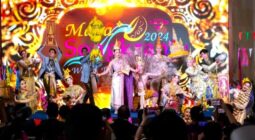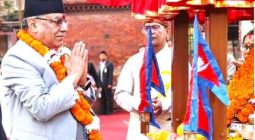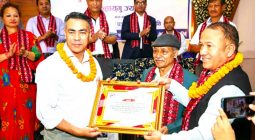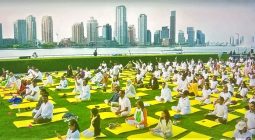Nepal is the land where 120 ethnic groups with their own religious, cultures, languages and life-styles exists in peaceful coexistence.
As Nepal is rich in scenic nature to diverse culture, thus, foreigners say “Every other building is a temple; every other day is a festival (in Nepal)”.
Every festival in Nepal traditionally begins with something religious and moves with spontaneous sprit into a pleasant family feast. This is because, for Nepalese, religion has always influenced and has been the core of Nepali culture.
Festivals also offer a dramatic glimpse of Nepal’s people when they are at their happiest and most relaxed. Nepal’s festivals rooted in the country’s history, mythology and religion, honour and propitiate the multitude of gods, controls malicious spirits, or celebrate mythological victories over evil.
Nepal’s festivals are celebrated from religious to historical aspect, agricultural to seasonal changes and legendary fun.
Festivals in Nepal are reckoned not only as occasions to indulge in eating, drinking and making merry but also as occasions when one is to devote some of one’s time to the worship of and meditation upon gods and goddesses in different forms.
Festivals also offer a dramatic glimpse of Nepalese people whose wonderful cultural heritage is an invaluable resource, one which the Nepalese are striving to preserve.
Among those, Pahan Charhe is one of the festivals for the native inhabitants of the Kathmandu Valley.
Pahachare (means inviting guests and celebrate in Newari language) is the three-day festival of the Newar community. This festival begins every year on the Chaitra Krishna Pakcha Chaturdashi (Krishna Pakshya is second half of a lunar month). This year it is being celebrating today- 23rd March- Monday this year)
On the first day, people clean their surroundings and sewage considering it a worship of Lukumahadev with perform pooja. Being an exclusive day of pisach (ghostly sprits), worship is offered to Luku maha-dyo, an elusive manifestation of the Lord Shiva. The festival marks the defeat of evil spirits and people invite their relatives and friends to join in feasting and merry making. The streets are filled with families on their way to visit relatives. There is also a seasonal song which is played during Pahan Charhe.
Ghode Jatra is second day (tomorrow). This day palaquins are placed in Tundikhel. Ghode Jatra, or the Horse Festival consists of colourful pageantry dominated by horse races at Tundhikhel, the parade ground at the city’ heart.

Legend has it that the thundering hooves of the horses keep the un-absolved sprit of Tundi, a ferocious demon, buried under that very ground. Ghode Jatra is celebrated to ward off demonic Gurumapa. As it is said the soul of the demon still lives underground at Tundikhel. To prevent him from rising again, a horse race is organised on this day by the Nepal Army.
It is said Ghode Jatra was organized to celebrate the victory over a demon named Tundi who reside over the field known as Tundikhel. Tundi was a big terror for the people of Kathmandu. When he died people cheered by dancing onto his body with horses. It is believed that galloping of horses on Ghode Jatra at Tundikhel keeps the demon’s sprit under the ground.
In Patan, a version of the Ghode Jatra festival, a horse is made to drink liquor and the town people chase the intoxicated animal through the city streets amidst much cheering and clapping.
In recent years, parachuting, aerobatics, bicycle races and other sports have been included to add to the thrills and stuns of the traditional horses races to be performed at the Nepal Army Pavilion, Tundikhel. However, this year due to coronavirus Nepal Army is celebrating in a small manner only.
People invite their married daughters and sisters to home for a grand feast on the second and third days.
On the occasion, eight goddesses at different Shaktipiths (power centres) including Kankeshwori, Bhadrakaali and Mahankal are said to be activated through tantrik rites.
Twelve masked dancers representing various divinities perform ceremonial dances all through the night.
And day after tomorrow, this year falls on Wednesday- 25th March, the palanquins of various deities Lumadi, Bhadrakali, Kankeshwari and Bhairav are brought to Ason chowk during the day time for a grand finale ceremony, known as the “crashing of the gods”. But actually, this day is regarded as a symbol of meeting sisters once in a year.
Festivals are the lenses through which the culture of a country is brought into focus. Many festivals which Nepalese observing in their traditional way shows that Nepal is rich in its cultural heritage.
Above all, a festival is a social occasion, and an affirmation of the ancient and strong bonds of religion and culture. But, every country’s cultural heritage needs to be made known to the world in order to help in sharing of the cultural borrowings to be made possible.








